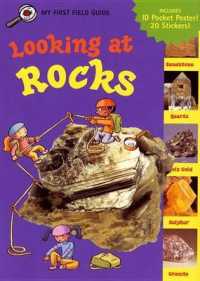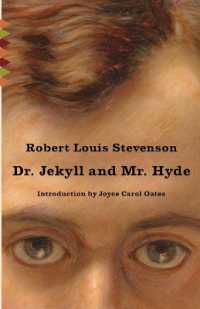Full Description
This rich collection of articles pays homage to many of the remarkably broad and interdisciplinary interests embodied in the work of Professor Georges-Jean Pinault. It contains not only historical and synchronic linguistic studies of numerous ancient languages---especially Tocharian, Sanskrit, Greek and Uyghur---but also editions of several recently discovered texts from Central Asia that contribute to the burgeoning fields of Buddhist and Silk Road studies. Lyuke wmer ra is a must-read for all scholars interested in the intersection of language, literature and religion of ancient and medieval western Eurasia.
Contents
Preface
Bibliography of Georges-Jean Pinault
List of Contributors
Douglas Q. Adams, The dual endings of the verb in Tocharian B and their Proto-Indo-European background
Émilie Aussant, The Vyakaran » . ic descriptive model and the French grammars of Sanskrit
Nalini Balbir, À propos d'un lapidaire prakrit Alain Blanc, L'histoire compliquée de l'adjectif grec ¢????Ò?
Václav Blaek, A hypothetical Tocharian contribution to Chinese astronomical terminology
Joel P. Brereton, How the Gayatr » »? became the Gayatr Gerd Carling, Flat mirror or well-shaped disc? Tocharian A tapaki » (B tapakye » ) and A mukär* .dam
Alvah Catt, A newly identified Tocharian fragment of the Tridan. d. isutra
Ching Chao-jung, He sat down on the grass under a Nyagrodha tree: On the Kuchean word atiyo* ? atiya* in Kumtura mural painting captions
Éric Dieu, Accentuation récessive et accentuation columnale en grec ancien, avec quelques considérations sur la loi de limitation
Hannes A. Fellner, Polar life in the Tarim Basin
José Luis García Ramón, The development of the labiovelars in Greek: Sound change, areal diffusion, and the myth of the three phases Romain Garnier, The PIE word for 'name'
Laura Grestenberger, The ín-group: Indo-Iranian ín-stems and their Indo-European relatives
Jens-Uwe Hartmann, Dieter Maue, and Fang Wang, Der neugeborene Bodhisattva besucht das S'akya-Heiligtum: Zu den Bildern und der Treppenhöhle von Kizil
Athanaric Huard, "pattitrukalle kari'skenta wärpanamane" ou comment honorer un moine tokharien
Stephanie W. Jamison, False segmentations and resegmentations in the Rigveda: Gemination and degemination
Jay H. Jasanoff, Pre-Toch. *h1 ludh -néu-ti 'goes out'
Ronald I. Kim, Remarks on linguistic variation and change in Tocharian A
Jared S. Klein, The Old Church Slavic background of Russian a Bernhard Koller, Question particles and the left periphery within Tocharian syntax
Frederik Kortlandt, Tocharian B ste, star 'is', skente, skentar 'are'
Jens Peter Laut and Ablet Semet, Neues zum ??. Kapitel des altuigurischen Maitreyasamiti-Sutra (Maitrisimit nom bitig)
Claire Le Feuvre, Védique vádhri-, v ? r's . an-, dharú » -, grec *????, ¥????/???? et ?Á???: Conversion et dérivation
Alexander Lubotsky and Alwin Kloekhorst, Indo-Aryan a)u? artanna in the Kikkuli treatise
Melanie Malzahn, Back to an old, but not decrepit explanation of Homeric Greek ?"??»
Vincent Martzloff, Vestiges du participe parfait en *-wos-/-us- en latin et dans les langues sabelliques?
Audrey Mathys, Participes présents, noms d'agents et langue poétique dans Beowulf
H. Craig Melchert, Hittite neuter i-stems.
Alan J. Nussbaum, Persephonology and Persemorphology: ??????Ò??/?????????? etc. 'Sheaf Thresher' reanalyzed
Norbert Oettinger, Die Bedeutung von vedisch 'svañc
Hirotoshi Ogihara, Agama texts transmitted to Kuchean Buddhism
Birgit Anette Olsen, Latin -ll- and gemination by laryngeal
Daniel Petit, On the secondary cases of Baltic and Tocharian
Michaël Peyrot, On a festive occasion: The inflection of Tocharian B eks . alye and morphologically related words
Elisabeth Rieken, Anatolische Fruchtbarkeit, urindogermanische Männer und die Wurzel *men- 'hervorragen'
Nicholas Sims-Williams, Chotano-Sogdica III: Old Khotanese u, -u, -u
Carmen Spiers, La malédiction de l'observateur (upadras. t . ár-) dans l'Atharvaveda
Brent Vine, biass biítam, valetudinem vitam: On alliteration in Italic curse texts
Michael Weiss, Barley in Anatolian, Tocharian, and elsewhere: A fine-grained analysis
Jens Wilkens and Hans Nugteren, Notes on Old Uyghur lexicography and etymology
Kazuhiko Yoshida, The Hittite pl. preterites in -ar revisited
Peter Zieme, Das letzte Blatt der Sängimer Einleitung zum Maitrisimit nom bitig und ein tocharisches Wort
Stefan Zimmer, Le suffixe gaulois *-»eto- Index Verborum
Index Verborum








